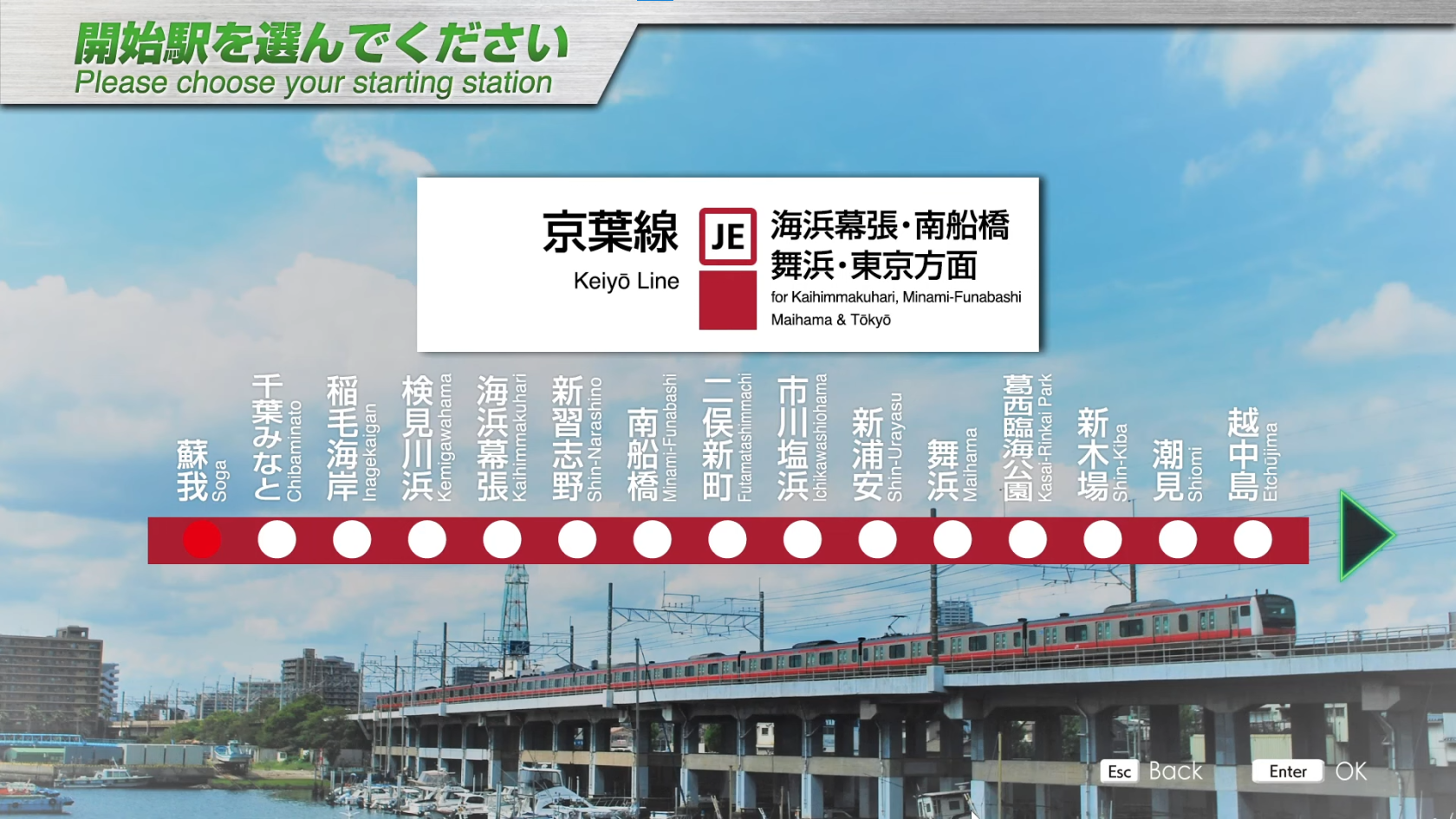Keiyo Line
Introducing
The Keiyo Line, which opened in 1990, is a relatively young line within JR East, connecting Chiyoda-ku, Tokyo, with Chiba City, Chiba Prefecture.
Except for the underground section between Tokyo Station and Etchujima Station, the entire line is characterized by running on elevated tracks along Tokyo Bay. The area along the line is being redeveloped as reclaimed land on Tokyo Bay, and in addition to new towns, theme parks, large shopping malls, and offices are towering above the area.A delta line (connecting line) is provided from Nishi Funabashi Station on the Musashino Line to Ichikawa Shiohama Station and Minami Funabashi Station on the Keiyo Line, and Musashino Line trains operate directly to the Keiyo Line.
Key data
- Line length: 43 km
- Number of stations: 17
- Safety system: ATS-P
- Train model: E233-5000 series
- Max speed:
- Soga ~ Tokyo : 100 km/h
- Max speed after signals :
- Reduced speed (green/yellow) : 75 km/h
- Caution (yellow) : 55 km/h
- Speed restriction (yellow/yellow) : 25 km/h
- Routes:
- Soga ~ Tokyo (1510Y) : "Local" - 10 cars - 17 stations - 43 km
- Soga ~ Tokyo (780Y) : "Local" - 10 cars - 17 stations - 43 km
Console detail
Apart from the pocket watch and the door-closing indicator in the center of the console, there are 2 displays.
Main screen

The first screen (train technical info) displays electrical voltages and various indicators at the top.
The bottom area contains:
- Brake level and indicators for emergency brake in red (非常) and speed limit in green (抑速)
- Brake cylinder pressure (BC)
- Main air reservoir pressure (MR). Note that if this falls below the red zone (780kPa), the compressor starts up.
- Speed dial.
Here are the translations of the indicators:
|
|
TIMS screen
The second screen contains the trip information. The upper part shows the time, speed and distance between the train and Tokyo station. Below this, the train number is shown.
Then, in the center, you see a representation of the stations to come. The line runs from right to left:
- The last station with a set departure time (Shin-Narashino/新習志野 - 16:14:10)
- The current station (or one we've just left - Minami-Funabashi/南船橋) and the next 4 stations, potentially with an arrival time (in minutes - above the line) and a departure time (in minutes - below) (Futamata-Shinmachi/二俣新町 - Ichikawa-Shiohama/市川塩浜 - Shin-Urayasu/新浦安 16: 26:40 - Maihama/舞浜)
- The next station with a specified arrival/departure time (Kasairinkai-Kōen/葛西公園 - 16:33:00)
- The station and arrival time at the terminus (Tokyo/東京 - 16:46:20)
Finally, at the bottom of the screen are the different cars. The indicator above each car shows whether the doors are open (lit) or not. The cars can take 2 colors: blue (engines in use) or yellow (brakes in use).
Personal opinion
No opinion as I don't have this DLC yet.
Useful links
Wikipedia: https://en.wikipedia.org/wiki/Keiy%C5%8D_Line
Driver's guide: https://docs.google.com/spreadsheets/d/1uvxb3tELhCmwDvdRfkYscjmj_4mbb01k4Q4aaB-6SaA/edit#gid=1823883666
Movie of the line: https://www.youtube.com/watch?v=SHp7ldRC3lc
Timetable (in japanese - read from right to left) : https://docs.google.com/spreadsheets/d/1uvxb3tELhCmwDvdRfkYscjmj_4mbb01k4Q4aaB-6SaA/edit#gid=2115772756


